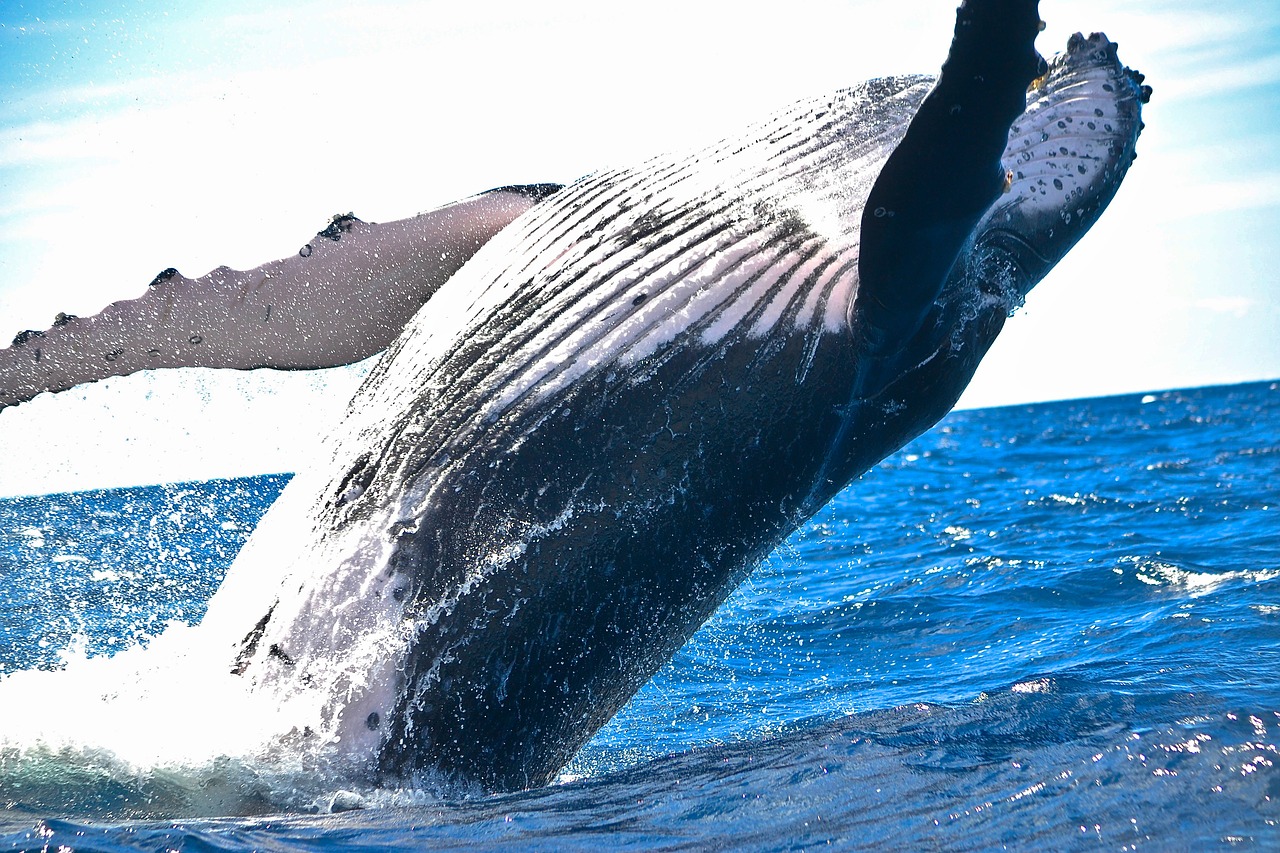
With more than 40 species of marine mammals present on their waters, Mexico represents a hotspot for whales, dolphins, and seals of the world. However, with around 60% of this species present under a risk category by the IUCN, Mexico faces big conservation challenges.
Species Richness
Ranging from the critically endangered Vaquita to the biggest animal on earth, the Blue Whale, Mexico records a total of 47 species of marine mammals present at least some part of the year on their waters. But not only is the high species richness surprising but also their unique composition. Oceanographically, we can differentiate in Mexico two very different regions based on two variables: temperature and dissolved oxygen.
The first region has warm or tropical waters and lower concentrations of dissolved oxygen where we can find species like the Pantropical Spotted Dolphin (Stenella attenuata) or the Pygmy Killer Whale (Feresa attenuata). The second region has temperate waters and higher concentrations of dissolved oxygen — here we identified species like the Guadalupe Fur Seal (Arctocephalus townsendi) or the Pacific white-sided dolphin (Lagenorhynchus obliquidens). Besides this, we can distinguish another group of species that have a wide distribution all over the waters of Mexico, like the Humpback whale (Megaptera novaeangliae) and the common bottlenose dolphin (Tursiops truncatus).
Marine mammals conservation
Following the world trend, the Mexican federal agency responsible for the management of all protected areas, including Marine Protected Areas (MPA) (the National Commission of Protected Areas, or CONANP) has developed different strategies to conserve the most representative ecosystems of Mexico and its biodiversity through different conservation modalities, which include management programs, action programs focused on endangered species, conservation programs for sustainable development, etc.
Our recent research focused on Marine Protected Areas and showed that at least 98% of the 47 species of marine mammals that are distributed throughout the year in Mexican waters are protected within at least one MPA along its distribution range. In terms of representation, 16 MPA located in the Mexican Pacific Ocean protect 42 species of marine mammals (98% of total registered for that ocean), and for the Atlantic Ocean, 16 MPA protect 26 species (96%); only the orca (Orcinus orca) is not represented in any MPA of the Atlantic Ocean.
The average Mexican MPA coverage is 1500 km2, however, seven MPAs (22% of the total amount) range below 100 km2. The average percentage of protection provided by an MPA to any marine mammal species is about 2.31% of their distribution (approximately 28.056km2, ranging from 0.05% to 29.74%). But if we put it in perspective, the average geographic distribution of marine mammals in the world is 52 million km2 (Pompa et al., 2011) and 1.7 million km for the marine mammal species in Mexico, so in relation to the average coverage of MPAs of Mexico (1500 km2), this is hardly representative.
Because of this, we identified three priority sites to promote marine mammals conservation:
- The Northern Gulf of Mexico is a high species richness area for marine mammals and supports a high biological activity for many other species. However, no MPA has been designated for this area.
- In the Southeast Pacific, there is only one AMP designated which consists exclusively of coastal areas. The open water area, characterized by the presence of upwelling and high productivity, is outside the polygon, leaving the marine mammals that are distributed beyond the coastal zone unprotected.
- The Northeast Pacific has the highest species richness of marine mammals in Mexico and is ranked second in the diversity of species worldwide (Pompa et al., 2011). It is also recognized as one of the key sites for breeding, calving, transit, and migration of these mammals, as well as being a fundamental part of the distribution of many species of cold and temperate affinities, influenced by the component temperature.
We do not explicitly consider whether the designation of MPAs is the most appropriate solution to the problems facing the marine mammals in Mexico. Clearly, the conservation of these species requires the development of appropriate and effective conservation strategies that include habitat conservation, environmental education of the species and attention to its threats. However, the designation of new MPA, as well as the extension or creation of corridors between MPAs in the regions here highlighted, may represent one step in this process.
These findings are described in the article entitled Marine mammals of Mexico: Richness patterns, protected areas, and conservation trends, recently published in the journal Estuarine, Coastal and Shelf Science. This work was conducted by Mariana Muzquiz-Villalobos from Centro de Investigaciones Biológicas del Noroeste and Sandra Pompa-Mansilla from Fuego Verde S.C.
Reference:
- Pompa S., P. Ehrlich y G. Ceballos. 2011. Global distribution and conservation of marine mammals. PNAS: www.pnas.org/cgi/doi/10.1073/pnas.1101525108









